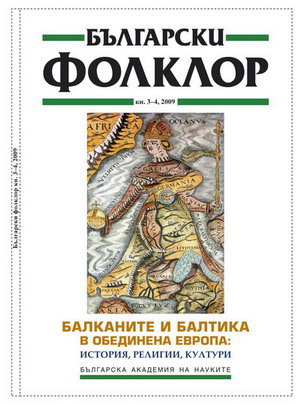Някои „латвийски” растения като знак за идентичност
Some “Latvian” Plants as a Sign of Identity
Author(s): Daina RozeSubject(s): Anthropology
Published by: Институт за етнология и фолклористика с Етнографски музей при БАН
Summary/Abstract: Love for nature, country life-style and living in separate farmsteads are regarded as signs of Latvian identity. But some plants either planted in the farmsteads or found there left by the previous owners have become signs of identity. In most cases the natural area of the plant’s origin and the time of its inclusion in the gardens of “Latvian farmstead” are apparently of little significance. Both wild plants of local Latvian flora and those whose origin lies somewhere else in Europe or even Asia have been accepted as signs of Latvian identity. Some examples of the latter are lovage, lad’s love or southernwood, sweet flag, peony, hollyhock. It must be noted that the “Latvian” plants of foreign origin are in most cases coalescent plants, more seldom bushes, while the local wild plants are mainly represented by trees. This presentation includes the results of a field-study reflecting the concept of the Latvians regarding which plants are to be considered belonging in the “Latvian” farmstead. People of all regions of Latvia were interviewed, taking into account that, though Latvia’s territory is not large, the garden culture and climate are quite substantial and exert some influence on the choice. A preliminary list of the plants considered typical “Latvian” ones has been prepared. Some insight into European comparative material has been provided, mainly into culture historical study of plants in Germany and Russia, as the cultural influence of these nations for centuries has had deep impact on Latvian culture.
Journal: Български фолклор
- Issue Year: XXXV/2009
- Issue No: 3-4
- Page Range: 107-113
- Page Count: 7
- Language: Bulgarian
- Content File-PDF

